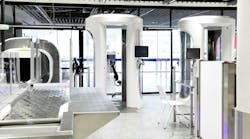“There is no such thing as perfect security; only varying levels of insecurity”
This is an aviation-oriented publication, so I don’t ordinarily stray into non-AvSec issues, but this one is closely related: The US Secret Service, through the National Threat Assessment Center, just published an exceedingly well researched document titled “Mass Attacks In Public Spaces – 2017”. Airports are by definition public places, and we are most definitely correct in our concern and use of our efforts and resources to keep them safe for the traveling public. Indeed, this report appears to suggest airports are playing pretty good defense - Yes, there were recent events in foreign airports in Istanbul, Brussels, others – but this report listed all 28 mass attacks in the US during 2017 in which 3 or more persons were hurt – just one was at a US airport– Ft. Lauderdale.
Collectively, the 28 events represent 141 lives lost, nearly 700 injured. The USSS examined these incidents, to identify key themes for enhancing threat assessments. Regardless of whether these attacks were acts of workplace violence, domestic violence, school-based violence, or terrorism, similar themes were seen in the perpetrators’ backgrounds:
- Nearly half were motivated by a personal grievance in a workplace or domestic issue.
- Over half had histories of criminal charges, mental health symptoms, and/or substance use.
- All had at least one significant recent major stressor; over half had financial instability.
- Over three-quarters made concerning communications prior to carrying out their attacks.
Public Sites: The incidents were carried out at 31 different sites, with nearly half (46%) at business locations; those in open spaces nearly a third (32%) in such locales as public sidewalks, outdoor event, and communal areas. Four (14%) were carried out at educational institutions; the remaining incidents on commuter trains, at an airport (FLL), and churches.
Weapons: Though most of the attacks were carried out using a firearm (82%), vehicles (11%) and knives (7%) were also used. At least 10 possessed their weapons illegally; two of those were minors; the others were either felons or had a protective order against them.
Timing: The attacks took place throughout the year and occurred on every day of the week; 61% took place between the hours of 7:00 a.m. and 3:00 p.m. For half (50%), it ended within 5 minutes.
End of Attack: In over half, the attackers ended the violence by either departing on their own (36%) or committing suicide at the scene (25%). For the remaining attacks, actions taken by law enforcement (18%) or bystanders (7%), ended the event.
Gender/Age: All of the attackers were male, ranging from a 15-year-old high school student to a 66-year-old retiree, with an average age of 37 years old.
The report contains a great deal more granular detail regarding such areas as substance abuse, criminal charges, mental health problems (nearly two-thirds of attackers), motivations, ideological beliefs, and the various types of personal or financial stressors experienced by all of them.
Clearly, there are a multitude of influences, stimuli, conditions, and personal circumstances that contribute to such an event; indeed, there continues to be much debate even as to what defines a mass attack, and why one might target, say, the terminal of an airport over a sports stadium or a bus station. The debate in our industry is how we can predictably prevent such attacks. Sorry to say it, but the short answer is: we can’t. There are simply too many data points in play to defend against every nut case in every conceivable scenario in every potential location. The Chinese General Sun Tzu recognized this in “The Art of War” a few thousand years ago: “He who seeks to protect against everything, protects nothing.”



